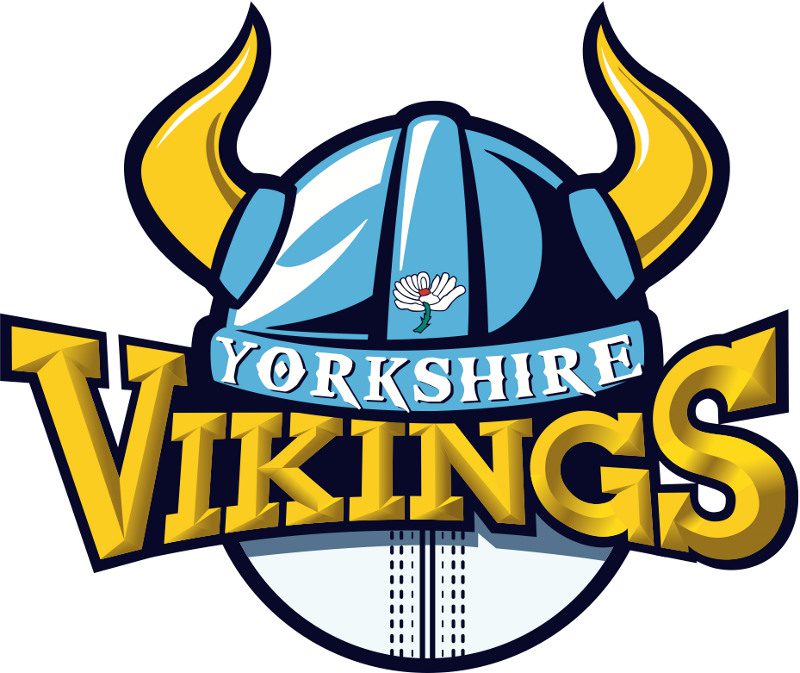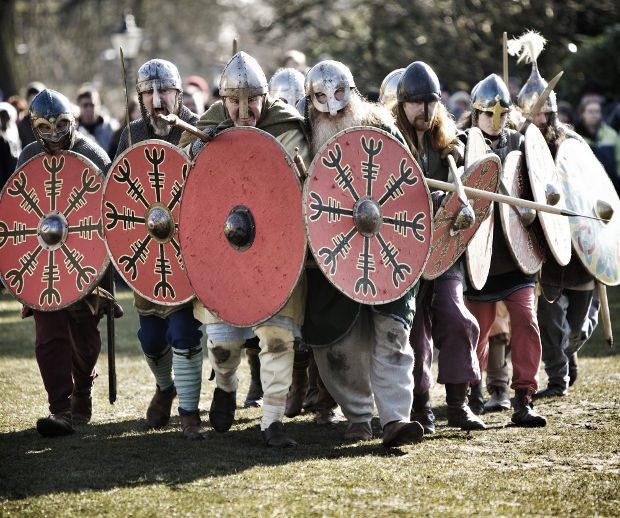
Many questions surround the origins of our favourite summer sport, but in this part of the world, especially since the county side’s one-day rebranding, there is one that deserves particular attention.
Did the Vikings play anything close to cricket?
Those of us of sufficient vintage will remember Derbyshire’s Great Dane, Ole Mortensen, the quick-bowling marauder from across the North Sea.
In the 1980s, Mortensen caused havoc in the English counties. The greatest number of victims he ever claimed in one battle was eleven, taking 6-27 and 5-62 at Sheffield in June 1983.
Though not much of a batsman, Mortensen also managed to club 74 runs – undefeated – at Chesterfield in 1987.
It can’t just be a coincidence that both of his most epic performances came against Yorkshiremen, in fields.
Was he entirely anomalous, though, or did Mortensen have four-hitting forebears in the wilds of Scandinavia?
I learnt with interest that both ‘stump’ and ‘wicket’ are Old Norse words, as is ‘gate’, through which I am often bowled. We need to delve into the past, and find out more…
I am not an archaeologist, but I live in Jorvik, play cricket on the Myre of Cenward, and hang around with an awful lot of bone-botherers, so I feel eminently qualified to speculate wildly on the sporting pursuits of Norsemen.
I’m not a complete charlatan, though, and for the purposes of rigour I have actually consulted with some genuine Viking experts.

After a few eighth Century forays, it was the ninth Century when the Danes turned up on the east coast with a full and frightening squad.
As with many an overseas touring team, Yorkshire’s villages and maidens soon found themselves under threat.
This may not have been a pleasant time to be an English opening batsman, but the idea that Vikings were just horned-helmet hooligans is a little misleading.
After the initial onslaught, calmer, more playable conditions eventually prevailed in northern England, and life settled into something more routine. A routine that included time for sports and pastimes.
Dr Steve Ashby of the University of York is an expert on the domestic activities of the Norse settlers, and has explored this subject in his book A Viking Way of Life.
He tells me that the Danes were very fond of games.
“I think the obvious thing to mention would be hnefatafl,” Steve says, which was a strategic board game distantly related to chess. “A more interesting and less well-known one would be horse fighting.”
Next time I’m at Headingley I might have to conduct a snap crowd survey to see what their favourite ‘games-less-well-known-than-hnefatafl’ are.
Horse-fighting was, as its name suggests, an equine combat in which stallions were pitted against each other. It often descended into fisticuffs between the horse owners too.
These are fascinating findings, I’m sure you’ll agree, broadening one’s perspective of what Vikings got up to in their spare time, but was there anything more cricket-like in their repertoire?
In 2012, Leszek Gardela of the University of Aberdeen wrote a paper entitled ‘What the Vikings did for fun? Sports and pastimes in medieval northern Europe.’
Much of this study focusses on hnefatafl and other chess-like games, or quite brutal tests of strength or endurance.
However, Gardela does note that some of the Icelandic sagas describe men playing knattleikr, which “involved throwing the ball, chasing and running,” and in which at least some of the players wielded bats.
With room for interpretation, a game of throwing a (possibly leather) ball, chasing and running, sometimes lasting more than one day, sounds like a distant cousin of cricket.
As Charlie Connolly explains in his book Elk Stopped Play, one or two have argued the cricketing case vociferously.
However it does seem to have been played mostly in winter, near frozen bodies of water, and involved chasing and tackling. Icelandic scholars generally seem to regard it as most like hockey, or hurling.
Even if knattleikr isn’t quite close enough to modern cricket to be convincing, it certainly conjures up the possibility of different, undocumented, bat-and-ball games.
To bolster this notion, we can return to Gardela’s work, in which he also mentions a record of “a game which involved a ball and a bat that took place inside a hall.”
It was played in front of the royal court, and apparently the furniture sometimes got in the way. It sounds to me like the Norse knattleikr-ers keeping their eye in over those long, dark winter nights.
Talking of Vikings rearranging the furniture, this brings us neatly back to Mortensen. “He just bowled immaculate line and length with an angry nature,” recalled his Derbyshire captain, Kim Barnett.
Controlled, sustained aggression: surely the perfect traits of a Danish warrior? In these days of big bats, short battles, and huge hitting, it seems odd that none of his countrymen have followed Mortensen’s blazing trail. Maybe we can just blame the ICC.
With some astute marketing, the opportunity is there for a new Scandinavian invasion, but naming Yorkshire the Vikings is not enough.
To really entice the Nordic novices, we need something a little more bloodthirsty. I’m pitching for the ground to get a temporary renaming. What warrior wouldn’t be welcome at Beheadingley?
- Vik it to wicket: Did the Vikings ever play cricket? - May 11, 2015